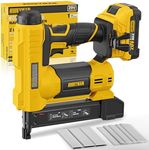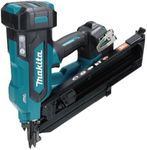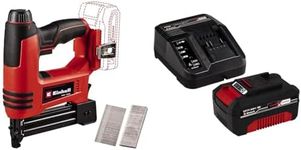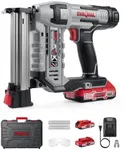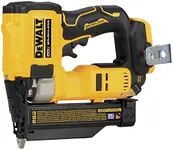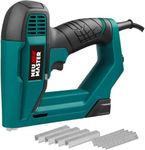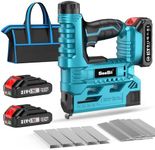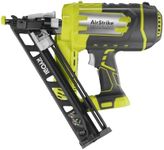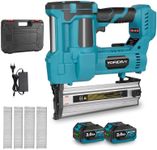Buying Guide for the Best Electric Nail Guns
Choosing the right electric nail gun can significantly enhance your efficiency and precision in various woodworking and construction tasks. Electric nail guns are favored for their ease of use, consistent power, and reduced physical strain compared to manual options. When selecting an electric nail gun, it's important to consider the type of projects you'll be working on, the frequency of use, and the specific features that will best suit your needs. Understanding the key specifications will help you make an informed decision and ensure that the tool you choose will meet your requirements effectively.Power SourceElectric nail guns can be corded or cordless. Corded models are powered by electricity from an outlet, providing consistent power without the need for recharging, making them ideal for long projects or heavy-duty tasks. Cordless models, on the other hand, are battery-powered, offering greater mobility and convenience, especially in areas without easy access to power outlets. If you need a nail gun for frequent use in a workshop, a corded model might be more suitable. For on-the-go tasks or outdoor projects, a cordless model could be the better choice.
Nail Size CompatibilityNail size compatibility refers to the range of nail lengths and gauges that the nail gun can handle. This is important because different projects require different nail sizes. For example, framing or heavy construction might require longer nails, while finishing work might need shorter, thinner nails. Nail guns are often categorized by the maximum nail size they can accommodate. Consider the types of projects you plan to undertake and ensure the nail gun you choose can handle the appropriate nail sizes for those tasks.
Firing ModesFiring modes determine how the nail gun drives nails. Common modes include single-sequential, which requires the trigger to be pulled for each nail, and bump or contact firing, which allows for faster nailing by holding the trigger and bumping the nose against the surface. Single-sequential is safer and more precise, making it suitable for detailed work, while bump firing is faster and better for large-scale projects. Choose a nail gun with a firing mode that matches your skill level and the type of work you will be doing.
Magazine CapacityMagazine capacity refers to the number of nails the gun can hold at one time. A larger capacity means fewer reloads, which can be beneficial for large projects or when working in hard-to-reach areas. However, a larger magazine can also make the tool heavier and more cumbersome. If you are working on extensive projects, a higher capacity might be advantageous. For smaller, more detailed work, a smaller magazine might suffice and offer better maneuverability.
Weight and ErgonomicsThe weight and ergonomics of an electric nail gun affect how comfortable it is to use over extended periods. A lighter tool is easier to handle and reduces fatigue, which is important for prolonged use. Ergonomically designed handles and grips can also enhance comfort and control. Consider how long you will be using the nail gun and choose a model that feels comfortable in your hand and is easy to maneuver, especially if you will be using it frequently or for long durations.
Depth AdjustmentDepth adjustment allows you to control how deep the nail is driven into the material. This feature is crucial for achieving a professional finish, as it helps prevent nails from being overdriven or underdriven. Some models offer tool-free depth adjustment, which is more convenient and allows for quick changes. If your projects require precision and a clean finish, look for a nail gun with easy and accurate depth adjustment capabilities.


